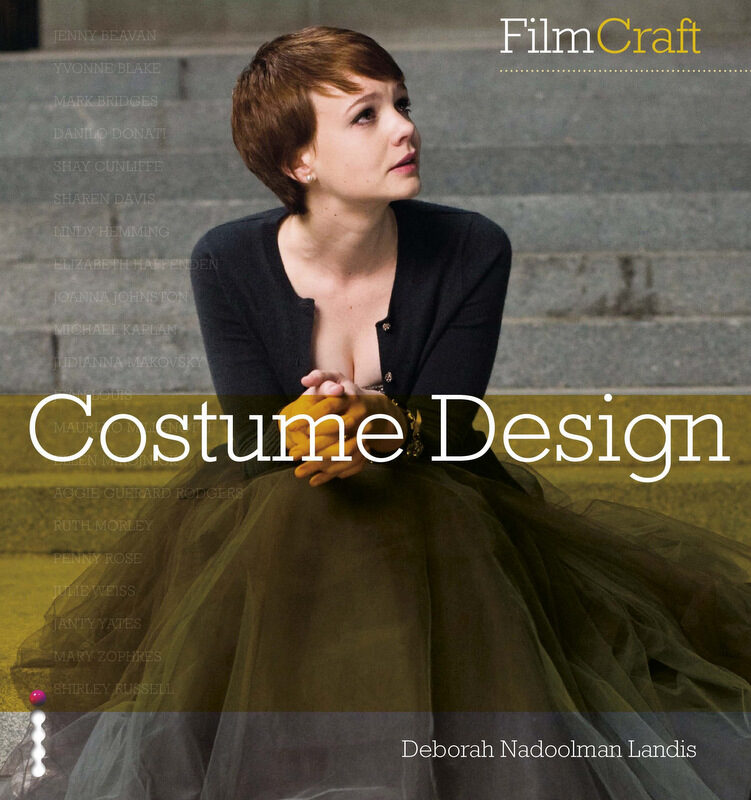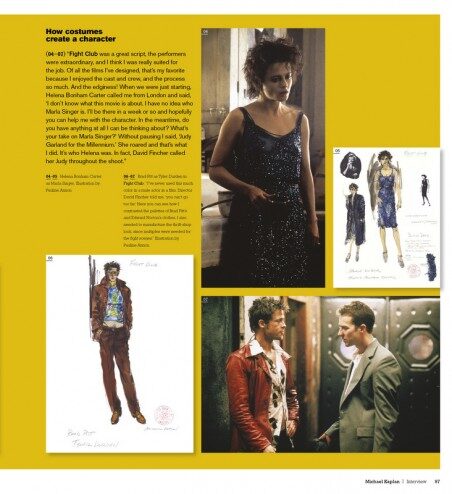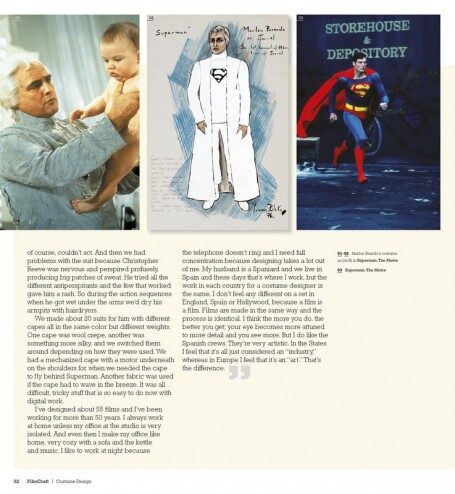FilmCraft: Costume Design – A New Book by Deborah Nadoolman Landis |
 © 2012, Ilex_Photo 25 Jun ’12
© 2012, Ilex_Photo 25 Jun ’12
It is with huge anticipation that we take an exclusive look at FilmCraft: Costume Design by Deborah Nadoolman Landis, arguably the most important person in the costume industry today.
As costume designer for Raiders of the Lost Ark (1981), Coming to America (1988), Burke and Hare (2010), and many other well known titles, in addition to former two-term president of the CDG, academic scholar and now museum curator, Nadoolman Landis is ideally placed to write such a book. It reads to us like an update of her similarly titled ScreenCraft volume from 2003, but is not officially intended as such. This all new publication features a detailed introduction, plus interviews with some of the most famous names in movie costume.
Although Nadoolman Landis did not have long to put this project together, only six months from announcement to press, she has created an essential reference guide for students, aficionados, and really anyone with an interest in the world of costume design. The introduction itself is gold. Six pages of describing the role, responsibilities and misconceptions of costume; “Costume is not fashion” she states, confessing too that the word ‘costume’ does her craft a disservice, conjuring up images of “Halloween, fancy dress, theme park”.

Reducing costume to its most rudimentary form, in this instance the humble hooded top, Nadoolman Landis traces the garment’s importance through a variety of films, from her own red version for Eddie Murphy in Trading Places (1983) to Michael Kaplan’s grey hoodie for Tom Cruise in Mission: Impossible – Ghost Protocol (2011). Even the simplest garment on-screen can reveal much about character. Expanding this idea, she acknowledges that contemporary costume design is more difficult than period. Not to take anything away from the latter, certainly not in terms of research, but this proves that all types of costume are essential, whether a plain cotton hoodie or African print turban.
The introduction also delves into the relationship between costume designers and their directors. Sometimes this is more trusting than others, as certain filmmakers collaborate with the same designers over and over again, e.g. Ridley Scott and Janty Yates (7 pictures together), Paul Thomas Anderson and Mark Bridges (6), the Coen Brothers and Mary Zophres (9). In fact Zophres admits that the Coen Brothers believe she can design for anything they write; they have absolute faith in her abilities.
Beyond the introduction, FilmCraft: Costume Design is compromised of 16 interviews with present day costume designers, 5 legacy retrospectives covering such major names as Jean Louis and Ruth Morley, and a useful glossary of terms. The interviews are a thorough analysis of each designer’s way into the craft, their process and thoughts on the movie industry. Best of all however are their production anecdotes. If costume designers are anything, it’s candid.

Jenny Beavan, for example, admitting that she is often paid less now than when she started out. Or Yvonne Blake’s tales of costuming Christopher Reeve for the first Superman film (who she testifies was by far the best in auditions). Apparently the actor got so warm in the hero suit that sweat patches formed under his arms; she had to constantly dry the skin-tight fabric with hairdryers.
Perhaps most fascinating of all is Mark Bridges’ Boogie Nights (1997) colour breakdown: ‘1977, let the good times roll, rainbow colours; 1982 beigeland; 1983, dirty laundry’. Also included is a wonderful sketch of Mark Wahlberg’s brushed denim tuxedo worn at the adult film awards. Bridges briefly covers his challenging time making There Will Be Blood (2007). “I wouldn’t do it again” he concludes ominously.
There is focus too on lesser known movies. Shay Cunliffe discusses her approach for Kathy Bates in Dolores Claiborne (1995); how Dolores’ clothes change gradually during the story as she stops caring about her appearance. Many of the designers interviewed have been featured at Clothes on Film, including Ellen Mirojnick, Joanna Johnston, Lindy Hemming, Judianna Makovsky, Michael Kaplan and Aggie Guerard Rodgers. It is riveting to read their thoughts on costumes that we have interpreted over the years; what we inferred correctly and what on some occasions went right over our heads. Being as costume design is often subtext, this was quite possibly the intention.

Sharen Davis, already well established for Dreamgirls (2006) and most recently The Help (2011), is a most innovative designer. A few months ago (contrary to a typo in the text – and there are quite a few to be honest), Davis began work on Quentin Tarantino’s western Django Unchained. Her advice for Tarantino after undertaking research into the ever changing pre-Civil War period? “You might want to pick a year”. She even started on the picture several weeks early for free just to get a head start, although insisted on pay for her assistant and illustrator. FilmCraft: Costume Design is crammed full of worthwhile titbits such as this.
Clothes on Film cannot recommend this publication enough. It functions as both a way into cinematic costume and a giddy fan reference for anyone who already knows the craft. This is not the only book you should buy about costume design, frankly put anything by Deborah Nadoolman Landis on your list, but it is probably the best.
FilmCraft: Costume Design by Deborah Nadoolman Landis is available now.
© 2012, Chris Laverty.
